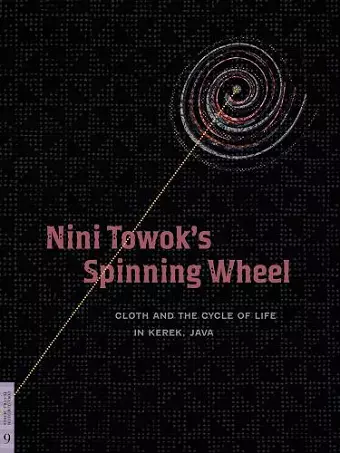Nini Towok's Spinning Wheel
Cloth and the Cycle of Life in Kerek, Java
Format:Paperback
Publisher:Fowler Museum of Cultural History,U.S.
Published:4th Aug '10
Currently unavailable, and unfortunately no date known when it will be back

The functions, techniques, patterning, and especially the color combinations of the Kerek cloth all form part of a highly structured and elaborate system of belief that is remarkably integrated with the community's social organization, mythology, and ritual practices.
Each type of cloth made in Kerek is created for a specific purpose - to be worn by a person of a particular age, social or residential group; to serve in life-cycle events such as marriage or funerals; and to act as a focal point in agricultural ceremonies or curing rites. This book deals with this topic.
In 1976 Dutch textile specialist Rens Heringa first visited Kerek in rural East Java and discovered a region where—unlike the rest of Java—the full range of textiles with woven patterning, as well as the only batik still made on handwoven cotton cloth, continued to be produced for local use.
Each type of cloth made in Kerek is created for a specific purpose—to be worn by a person of a particular age, social, or residential group; to serve in life-cycle events such as marriage or funerals; to act as a focal point in agricultural ceremonies or curing rites. The functions, techniques, patterning, and especially the color combinations of the cloth all form part of a highly structured and elaborate system of belief that is remarkably integrated with the community’s social organization, mythology, and ritual practices. Remnants of similarly integrated systems of belief are known from many parts of Java, but by the late 20th century the full system could be observed only in Kerek. Batik from Kerek today represents the antecedents of the courtly and urban batik found in collections around the world.
"What makes this book especially appealing is its richness of colorful illustrations. . . . [I]t should appeal to readers who are interested in material culture, especially decorative arts, and its symbolic meaning. . . . an inspiring work . . ."
-- B. Retang Wohangara * Journal of Folklore Research *"The title refers to the Javanese goddess who sends her yarn to Earth in the form of moonbeams. . . . Illustrations provide a look at pattern and dress styles, village life, and color in relation to life cycles and the cardinal directions."
* FiberarISBN: 9780977834426
Dimensions: unknown
Weight: 522g
92 pages